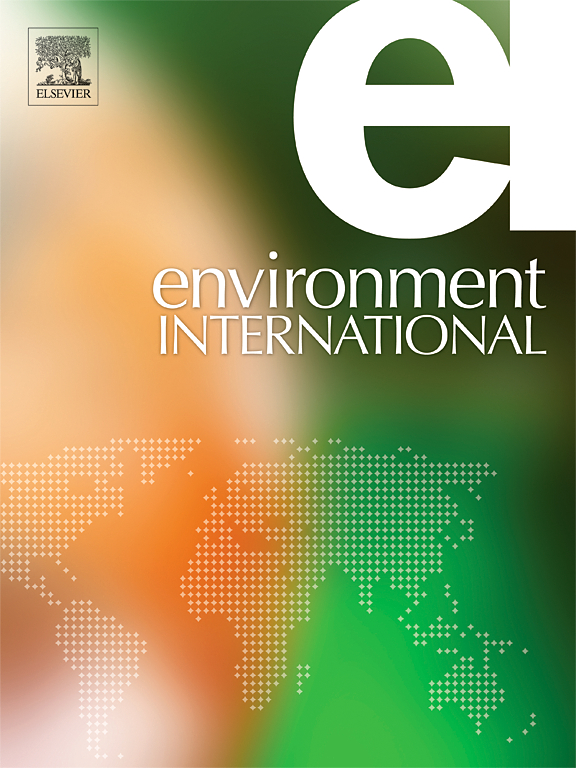Temporal trends of antibiotic resistance in culturable bacteria reveal the role of potential pathogens as pioneering carriers and resistance accumulators
IF 10.3
1区 环境科学与生态学
Q1 ENVIRONMENTAL SCIENCES
引用次数: 0
Abstract
Understanding the occurrence and temporal trends of antibiotic resistance genes (ARGs) within bacteria is crucial for controlling and predicting the proliferation of antibiotic-resistant bacteria. However, gaps remain in understanding the long-term trends across different bacterial species and in assessing related health risks. We collected 22,360 bacterial complete genome sequences with collection time and compiled a temporal dataset of ARGs in culturable bacteria. Our results revealed the widespread presence of ARGs among culturable bacterial species, with potential pathogens carrying significantly more ARGs than non-pathogenic species. Temporal trend analysis revealed that only 11.0 % of bacterial species experienced an increase of more than one unit in ARG quantity and diversity over one century, with 83.3 % of them being potential pathogenic species. The temporal accumulation of ARGs in many potential pathogenic species is influenced by the abundance of mobile genetic elements, with several species also exhibiting temporal accumulation of plasmid-borne ARGs. Notably, Shigella flexneri and Klebsiella pneumoniae exhibited an accumulation of high-risk ARGs associated with at least five antibiotic types over at least 40 years. Furthermore, the distribution of ARG-carrying strains before the use of antibiotics revealed a wide range of bacterial species and antibiotic types for intrinsic resistance, including some synthetic antibiotics. This work reveals the significant role of potential pathogens in the expansion of antibiotic resistance and highlights the importance of strengthening vigilance against the emergence of novel multidrug-resistant pathogens.

可培养细菌中抗生素耐药性的时间趋势揭示了潜在病原体作为先锋携带者和耐药性积累者的作用
了解细菌内抗生素耐药基因(ARGs)的发生和时间趋势对于控制和预测抗生素耐药菌的增殖至关重要。然而,在了解不同细菌种类的长期趋势和评估相关的健康风险方面仍然存在差距。我们收集了22360个细菌全基因组序列,并编制了可培养细菌ARGs的时间数据集。我们的研究结果显示,ARGs在可培养的细菌物种中广泛存在,潜在病原体携带的ARGs明显多于非致病性细菌。时间趋势分析显示,在一个世纪内,ARG数量和多样性增加超过1个单位的细菌种类仅占11.0 %,其中83.3 %为潜在致病性菌种。在许多潜在致病物种中,ARGs的时间积累受到移动遗传元件丰度的影响,一些物种也表现出质粒携带ARGs的时间积累。值得注意的是,在至少40 年的时间里,福氏志贺氏菌和肺炎克雷伯菌表现出与至少五种抗生素类型相关的高风险ARGs的积累。此外,在使用抗生素之前,携带arg的菌株的分布揭示了广泛的细菌种类和抗生素类型,包括一些合成抗生素。这项工作揭示了潜在病原体在抗生素耐药性扩大中的重要作用,并强调了加强对新型多重耐药病原体出现的警惕的重要性。
本文章由计算机程序翻译,如有差异,请以英文原文为准。
求助全文
约1分钟内获得全文
求助全文
来源期刊

Environment International
环境科学-环境科学
CiteScore
21.90
自引率
3.40%
发文量
734
审稿时长
2.8 months
期刊介绍:
Environmental Health publishes manuscripts focusing on critical aspects of environmental and occupational medicine, including studies in toxicology and epidemiology, to illuminate the human health implications of exposure to environmental hazards. The journal adopts an open-access model and practices open peer review.
It caters to scientists and practitioners across all environmental science domains, directly or indirectly impacting human health and well-being. With a commitment to enhancing the prevention of environmentally-related health risks, Environmental Health serves as a public health journal for the community and scientists engaged in matters of public health significance concerning the environment.
 求助内容:
求助内容: 应助结果提醒方式:
应助结果提醒方式:


